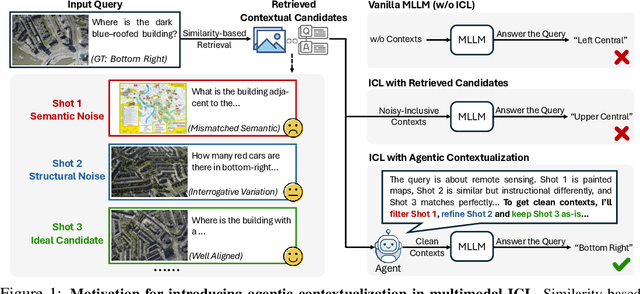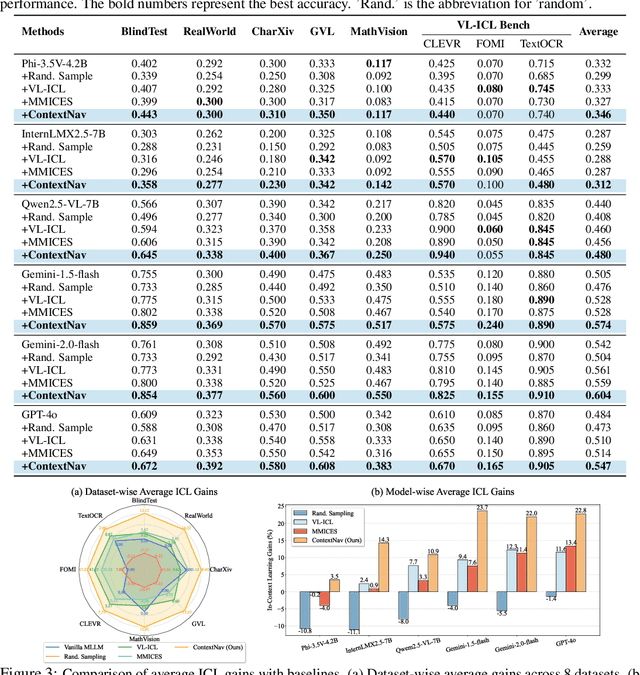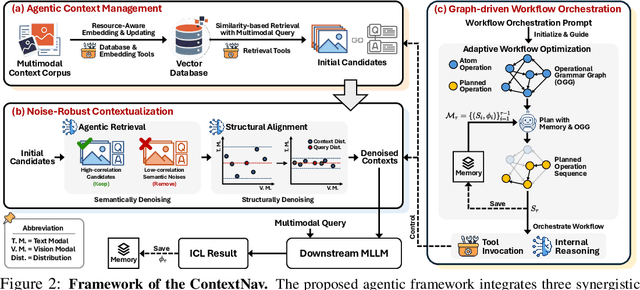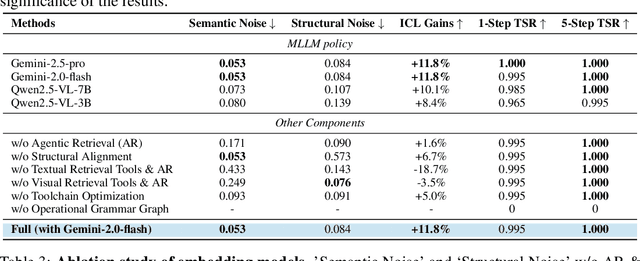Yiwei Wang
University of California, Merced, USA
Bi-Erasing: A Bidirectional Framework for Concept Removal in Diffusion Models
Dec 16, 2025Abstract:Concept erasure, which fine-tunes diffusion models to remove undesired or harmful visual concepts, has become a mainstream approach to mitigating unsafe or illegal image generation in text-to-image models.However, existing removal methods typically adopt a unidirectional erasure strategy by either suppressing the target concept or reinforcing safe alternatives, making it difficult to achieve a balanced trade-off between concept removal and generation quality. To address this limitation, we propose a novel Bidirectional Image-Guided Concept Erasure (Bi-Erasing) framework that performs concept suppression and safety enhancement simultaneously. Specifically, based on the joint representation of text prompts and corresponding images, Bi-Erasing introduces two decoupled image branches: a negative branch responsible for suppressing harmful semantics and a positive branch providing visual guidance for safe alternatives. By jointly optimizing these complementary directions, our approach achieves a balance between erasure efficacy and generation usability. In addition, we apply mask-based filtering to the image branches to prevent interference from irrelevant content during the erasure process. Across extensive experiment evaluations, the proposed Bi-Erasing outperforms baseline methods in balancing concept removal effectiveness and visual fidelity.
Reward and Guidance through Rubrics: Promoting Exploration to Improve Multi-Domain Reasoning
Nov 18, 2025Abstract:Recent advances in reinforcement learning (RL) have significantly improved the complex reasoning capabilities of large language models (LLMs). Despite these successes, existing methods mainly focus on single-domain RL (e.g., mathematics) with verifiable rewards (RLVR), and their reliance on purely online RL frameworks restricts the exploration space, thereby limiting reasoning performance. In this paper, we address these limitations by leveraging rubrics to provide both fine-grained reward signals and offline guidance. We propose $\textbf{RGR-GRPO}$ (Reward and Guidance through Rubrics), a rubric-driven RL framework for multi-domain reasoning. RGR-GRPO enables LLMs to receive dense and informative rewards while exploring a larger solution space during GRPO training. Extensive experiments across 14 benchmarks spanning multiple domains demonstrate that RGR-GRPO consistently outperforms RL methods that rely solely on alternative reward schemes or offline guidance. Compared with verifiable online RL baseline, RGR-GRPO achieves average improvements of +7.0%, +5.4%, +8.4%, and +6.6% on mathematics, physics, chemistry, and general reasoning tasks, respectively. Notably, RGR-GRPO maintains stable entropy fluctuations during off-policy training and achieves superior pass@k performance, reflecting sustained exploration and effective breakthrough beyond existing performance bottlenecks.
Spatial Blind Spot: Auditory Motion Perception Deficits in Audio LLMs
Nov 17, 2025Abstract:Large Audio-Language Models (LALMs) have recently shown impressive progress in speech recognition, audio captioning, and auditory question answering. Yet, whether these models can perceive spatial dynamics, particularly the motion of sound sources, remains unclear. In this work, we uncover a systematic motion perception deficit in current ALLMs. To investigate this issue, we introduce AMPBench, the first benchmark explicitly designed to evaluate auditory motion understanding. AMPBench introduces a controlled question-answering benchmark designed to evaluate whether Audio-Language Models (LALMs) can infer the direction and trajectory of moving sound sources from binaural audio. Comprehensive quantitative and qualitative analyses reveal that current models struggle to reliably recognize motion cues or distinguish directional patterns. The average accuracy remains below 50%, underscoring a fundamental limitation in auditory spatial reasoning. Our study highlights a fundamental gap between human and model auditory spatial reasoning, providing both a diagnostic tool and new insight for enhancing spatial cognition in future Audio-Language Models.
PAS: A Training-Free Stabilizer for Temporal Encoding in Video LLMs
Nov 14, 2025Abstract:Video LLMs suffer from temporal inconsistency: small shifts in frame timing can flip attention and suppress relevant frames. We trace this instability to the common extension of Rotary Position Embeddings to video through multimodal RoPE. The induced inverse Fourier time kernel exhibits frame-scale ripples that multiply adjacent frames by different factors, which perturbs attention that should otherwise be governed by the raw query key inner product. We present Phase Aggregated Smoothing (PAS), a simple, training-free mechanism that applies small opposed phase offsets across heads and then aggregates their outputs. PAS preserves the per-head spectrum magnitude, while the aggregation effectively smooths the temporal kernel and reduces phase sensitivity without changing the positional encoding structure. Our analysis shows that the RoPE rotated logit can be approximated as a content dot product scaled by a time kernel; smoothing this kernel yields Lipschitz stability of attention to small temporal shifts; multi phase averaging attenuates high frequency ripples while preserving per-head spectra under Nyquist-valid sampling. Experiments on multiple video understanding benchmarks under matched token budgets show consistent improvements with negligible computational overhead. PAS provides a plug and play upgrade for robust temporal encoding in Video LLMs.
OIDA-QA: A Multimodal Benchmark for Analyzing the Opioid Industry Documents Archive
Nov 14, 2025Abstract:The opioid crisis represents a significant moment in public health that reveals systemic shortcomings across regulatory systems, healthcare practices, corporate governance, and public policy. Analyzing how these interconnected systems simultaneously failed to protect public health requires innovative analytic approaches for exploring the vast amounts of data and documents disclosed in the UCSF-JHU Opioid Industry Documents Archive (OIDA). The complexity, multimodal nature, and specialized characteristics of these healthcare-related legal and corporate documents necessitate more advanced methods and models tailored to specific data types and detailed annotations, ensuring the precision and professionalism in the analysis. In this paper, we tackle this challenge by organizing the original dataset according to document attributes and constructing a benchmark with 400k training documents and 10k for testing. From each document, we extract rich multimodal information-including textual content, visual elements, and layout structures-to capture a comprehensive range of features. Using multiple AI models, we then generate a large-scale dataset comprising 360k training QA pairs and 10k testing QA pairs. Building on this foundation, we develop domain-specific multimodal Large Language Models (LLMs) and explore the impact of multimodal inputs on task performance. To further enhance response accuracy, we incorporate historical QA pairs as contextual grounding for answering current queries. Additionally, we incorporate page references within the answers and introduce an importance-based page classifier, further improving the precision and relevance of the information provided. Preliminary results indicate the improvements with our AI assistant in document information extraction and question-answering tasks. The dataset is available at: https://huggingface.co/datasets/opioidarchive/oida-qa
AttnCache: Accelerating Self-Attention Inference for LLM Prefill via Attention Cache
Oct 29, 2025Abstract:Large Language Models (LLMs) are widely used in generative applications such as chatting, code generation, and reasoning. However, many realworld workloads such as classification, question answering, recommendation, and text embedding rely solely on the prefill stage of inference, where the model encodes input sequences without performing autoregressive decoding. In these prefill only scenarios, the self-attention computation becomes the primary performance bottleneck due to its quadratic complexity with respect to sequence length. In this paper, we observe that semantically different sentences often produce similar attention maps across layers and heads. Building on this insight, we propose AttnCache, a framework that accelerates the prefill stage of LLM inference by retrieving and reusing similar attention maps. Based on an attention map memorization database, AttnCache employs efficient caching and similarity search techniques to identify and reuse pre-cached attention maps during inference, thereby reducing the computational overhead of self-attention. Experimental results show that AttnCache achieves an average of 1.2x end-to-end and 2x attention speedup on CPU, and 1.6x end-to-end and 3x attention speedup on GPU, with negligible accuracy degradation.
A Survey of Vibe Coding with Large Language Models
Oct 14, 2025Abstract:The advancement of large language models (LLMs) has catalyzed a paradigm shift from code generation assistance to autonomous coding agents, enabling a novel development methodology termed "Vibe Coding" where developers validate AI-generated implementations through outcome observation rather than line-by-line code comprehension. Despite its transformative potential, the effectiveness of this emergent paradigm remains under-explored, with empirical evidence revealing unexpected productivity losses and fundamental challenges in human-AI collaboration. To address this gap, this survey provides the first comprehensive and systematic review of Vibe Coding with large language models, establishing both theoretical foundations and practical frameworks for this transformative development approach. Drawing from systematic analysis of over 1000 research papers, we survey the entire vibe coding ecosystem, examining critical infrastructure components including LLMs for coding, LLM-based coding agent, development environment of coding agent, and feedback mechanisms. We first introduce Vibe Coding as a formal discipline by formalizing it through a Constrained Markov Decision Process that captures the dynamic triadic relationship among human developers, software projects, and coding agents. Building upon this theoretical foundation, we then synthesize existing practices into five distinct development models: Unconstrained Automation, Iterative Conversational Collaboration, Planning-Driven, Test-Driven, and Context-Enhanced Models, thus providing the first comprehensive taxonomy in this domain. Critically, our analysis reveals that successful Vibe Coding depends not merely on agent capabilities but on systematic context engineering, well-established development environments, and human-agent collaborative development models.
Detecting and Mitigating Insertion Hallucination in Video-to-Audio Generation
Oct 09, 2025Abstract:Video-to-Audio generation has made remarkable strides in automatically synthesizing sound for video. However, existing evaluation metrics, which focus on semantic and temporal alignment, overlook a critical failure mode: models often generate acoustic events, particularly speech and music, that have no corresponding visual source. We term this phenomenon Insertion Hallucination and identify it as a systemic risk driven by dataset biases, such as the prevalence of off-screen sounds, that remains completely undetected by current metrics. To address this challenge, we first develop a systematic evaluation framework that employs a majority-voting ensemble of multiple audio event detectors. We also introduce two novel metrics to quantify the prevalence and severity of this issue: IH@vid (the fraction of videos with hallucinations) and IH@dur (the fraction of hallucinated duration). Building on this, we propose Posterior Feature Correction, a novel training-free inference-time method that mitigates IH. PFC operates in a two-pass process: it first generates an initial audio output to detect hallucinated segments, and then regenerates the audio after masking the corresponding video features at those timestamps. Experiments on several mainstream V2A benchmarks first reveal that state-of-the-art models suffer from severe IH. In contrast, our PFC method reduces both the prevalence and duration of hallucinations by over 50\% on average, without degrading, and in some cases even improving, conventional metrics for audio quality and temporal synchronization. Our work is the first to formally define, systematically measure, and effectively mitigate Insertion Hallucination, paving the way for more reliable and faithful V2A models.
ContextNav: Towards Agentic Multimodal In-Context Learning
Oct 06, 2025



Abstract:Recent advances demonstrate that multimodal large language models (MLLMs) exhibit strong multimodal in-context learning (ICL) capabilities, enabling them to adapt to novel vision-language tasks from a few contextual examples. However, existing ICL approaches face challenges in reconciling scalability with robustness across diverse tasks and noisy contextual examples: manually selecting examples produces clean contexts but is labor-intensive and task-specific, while similarity-based retrieval improves scalability but could introduce irrelevant or structurally inconsistent samples that degrade ICL performance. To address these limitations, we propose ContextNav, the first agentic framework that integrates the scalability of automated retrieval with the quality and adaptiveness of human-like curation, enabling noise-robust and dynamically optimized contextualization for multimodal ICL. ContextNav unifies context management and noise-robust contextualization within a closed-loop workflow driven by graph-based orchestration. Specifically, it builds a resource-aware multimodal embedding pipeline, maintains a retrievable vector database, and applies agentic retrieval and structural alignment to construct noise-resilient contexts. An Operational Grammar Graph (OGG) further supports adaptive workflow planning and optimization, enabling the agent to refine its operational strategies based on downstream ICL feedback. Experimental results demonstrate that ContextNav achieves state-of-the-art performance across various datasets, underscoring the promise of agentic workflows for advancing scalable and robust contextualization in multimodal ICL.
Blockwise SFT for Diffusion Language Models: Reconciling Bidirectional Attention and Autoregressive Decoding
Aug 27, 2025Abstract:Discrete diffusion language models have shown strong potential for text generation, yet standard supervised fine-tuning (SFT) misaligns with their semi-autoregressive inference: training randomly masks tokens across the entire response, while inference generates fixed-size blocks sequentially. This mismatch introduces noisy prefixes and leaky suffixes, biasing gradients away from the desired blockwise likelihood. We propose Blockwise SFT, which partitions responses into fixed-size blocks, selects one active block per step for stochastic masking, freezes all preceding tokens, and fully hides future ones. Loss is computed only over the active block, directly mirroring the blockwise decoding process. Experiments on GSM8K, MATH, and MetaMathQA show consistent gains over classical SFT under equal compute or token budgets. Block size consistency studies and ablations confirm that improvements stem from faithful training-inference alignment rather than incidental masking effects. Our results highlight the importance of matching supervision granularity to the decoding procedure in diffusion-based language models.
 Add to Chrome
Add to Chrome Add to Firefox
Add to Firefox Add to Edge
Add to Edge